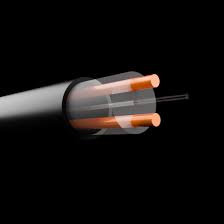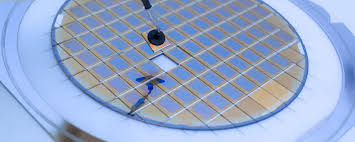MARKET OVERVIEW:
Global Radiation-resistant Fibers market is estimated to reach $1059.4 Million by 2031; growing at a CAGR of 8.5% from 2024 to 2031.
The Global Radiation-resistant Fibers market is a developing sector within the industrial fiber industry that focuses on creating materials capable of withstanding high levels of radiation. Various industries such as aerospace, defense, healthcare, nuclear energy, and telecommunication rely on these fibers to protect equipment, infrastructure, and personnel from radiation damage. These fibers are created using specialized polymers, ceramics, and composites to ensure resistance against ionizing radiation, allowing them to retain their characteristics even after exposure to high radiation levels.
Healthcare utilizes these fibers to produce protective gear and medical devices that are not compromised by prolonged radiation exposure. Aerospace, defense, and nuclear power plants also heavily rely on radiation-resistant fibers to protect against cosmic radiation in space missions, military operations, and continuous exposure to radiation in nuclear facilities. Additionally, there is a growing interest in using these fibers in telecommunications for applications in communications at high altitudes or satellite-based networks.
Research and manufacturers are continuously exploring new materials, blends, and production methods to enhance the resistance to radiation and improve the performance of these fibers for an even wider range of industries. As industries continue to expand and demand materials that can withstand extreme radiation, the Global Radiation-resistant Fibers market will remain crucial in providing protection and ensuring reliability for critical infrastructure and advanced technologies. The ongoing development and innovation in this market will further extend the range of industries benefiting from these fibers in the future.

GROWTH FACTORS
The market for radiation-resistant fibers is expected to grow significantly in the next few years due to increased demand from industries like aerospace, defense, and nuclear energy. These industries require materials that can withstand harsh radiation environments for safety and durability.
The market for high-performance fibers will continue to rise, especially with increased space explorations and satellite launches. The use of radiation-resistant fibers in protective clothing for workers in hazardous radiation environments is also expected to increase as safety regulations become stricter.
The high production cost and lack of awareness about the benefits of radiation-resistant fibers may limit market growth in some regions. However, ongoing technological advancements and research in fiber technology may lead to cost reductions and improved performance, making these materials more accessible and widely used. Despite challenges, opportunities for growth in emerging industries like space tourism and deep-sea exploration suggest a positive outlook for the radiation-resistant fibers market in the future.
MARKET SEGMENTATION
By Type
The Global Radiation-resistant Fibers market is experiencing continuous growth due to technological advancements and the increased need for durable materials across various industries. These fibers are designed to function in high-radiation environments and are used in nuclear facilities, space exploration missions, and the medical sector to provide essential protection for functionality.
The market for Global Radiation-resistant Fibers can be categorized into Single-mode Fibers and Multi-mode Fibers. Single-mode Fibers, valued at around 338. 7 million USD in 2023, are used for long-distance communication with minimal signal loss. They are ideal for communication space systems and long-range sensor networks, with increasing demand expected for more ambitious space missions. On the other hand, Multi-mode Fibers, valued at 213. 6 million USD in 2023, are used in shorter distance communication applications and can handle higher power levels, making them suitable for medical imaging devices and some radiation detection equipment.
Companies specializing in Single-mode and Multi-mode Fibers are poised to thrive in the Global Radiation-resistant Fibers market, leading to further growth by the end of the year. The aerospace and defense sector, valued at 169. 1 million USD in 2023, heavily relies on radiation-resistant fibers for equipment safety in extreme conditions. The military sector, valued at 130. 3 million USD in 2023, is also contributing to market growth as the need for protection from radiation exposure increases in battlefield and nuclear environments.
Additionally, industries like atomic energy, petroleum, offshore exploration, and the medical field are driving the growth of the global radiation-resistant fibers market. With steady developments across various sectors, the market is expected to maintain steady demand for radiation-resistant fibers in the future. As technology and industries continue to advance, the demand for these specialized fibers is likely to remain consistent across all sectors.

REGIONAL ANALYSIS
The radiation-resistant fibers market is growing worldwide, with North America, Europe, Asia-Pacific, South America, and the Middle East & Africa all experiencing expansion in this industry. In North America, the US, Canada, and Mexico are expected to remain strong in the world market due to emphasis on safety in healthcare and nuclear energy, leading to increased demand for these fibers.
In Europe, countries like the UK, Germany, France, and Italy are actively participating in the market, driven by interest in nuclear energy projects and the need to move away from reliance on fossil fuels. The Asia-Pacific region, including India, China, Japan, and South Korea, is also projected to see significant growth as industrial and healthcare sectors rapidly expand, leading to increased demand for radiation-resistant fibers. South America, particularly Brazil and Argentina, is likely to drive market growth due to rising energy needs and healthcare infrastructure.
The Middle East & Africa, including GCC Countries, Egypt, and South Africa, may not currently be large markets, but with increasing nuclear energy projects and growing demand for safety measures in industries exposed to radiation, there is potential for growth in these regions as well.

KEY INDUSTRY PLAYERS
The Global Radiation-resistant Fibers Market is driven by technological advancements and various factors that will influence its future. Key companies in the market include OELABS, Exail, Heracle GmbH, LEONI Group, Thorlabs, Inc. , AFL Global, Humanetics Group (Fibercore), SEDI-ATI, Coherent Corp. , and J-fiber GmbH.
The demand for high resistance to radiation in industries such as aerospace, nuclear power, medical imaging, and electronics is increasing with technological advancements. Companies like OELABS and Exail are at the forefront of research and development, aiming to innovate fibers that are durable and resistant to radiation. Heracle GmbH and LEONI Group are also leaders in the market, offering high-performance fibers for critical sectors. Thorlabs, Inc. and AFL Global excel in optical and fiber technologies, driving improved performance and reliability in radiation-resistant fibers. Humanetics Group (Fibercore) and SEDI-ATI are innovators in producing high-quality and efficient fiber solutions. Coherent Corp. and J-fiber GmbH are also prominent firms in the industry, specializing in advanced technologies and high-performance fiber production.
The future prospects for the Global Radiation-resistant Fibers Market look promising, with key players investing in enhancing the quality and functionality of their products to meet growing market demands and drive industry growth.
REPORT SCOPE AND SEGMENTATION
|
Attributes |
Details |
|
Market Size By 2031 |
USD 1059.4 Million |
|
Growth Rate |
CAGR of 8.5% |
|
Forecast period |
2024 - 2031 |
|
Report Pages |
250+ |
|
By Type |
|
|
By Application |
|
|
By Region |
|
|
Key Market Players |
|



_page-000131.jpg)
_page-000130.jpg)
_page-000129.jpg)
_page-000128.jpg)

1.jpg)




 APAC:+91 7666513636
APAC:+91 7666513636





